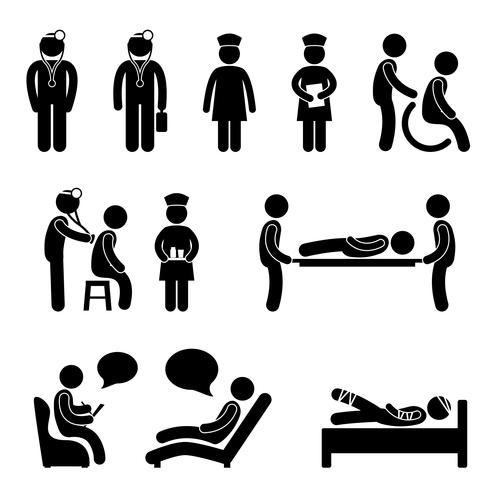What To Expect In A Psychiatric Hospital
What To Expect In A Psychiatric Hospital
Blog Article
Exactly How Do State Of Mind Stabilizers Job?
State of mind stabilizers aid to soothe areas of the mind that are influenced by bipolar illness. These drugs are most reliable when they are taken on a regular basis.
It may take a while to discover the ideal drug that works best for you and your physician will certainly check your problem throughout treatment. This will include routine blood examinations and perhaps a change in your prescription.
Neurotransmitter policy
Natural chemicals are a team of chemicals that manage one another in healthy individuals. When levels end up being out of balance, this can cause state of mind problems like depression, anxiety and mania. Mood stabilizers assist to avoid these episodes by assisting control the equilibrium of these chemicals in the mind. They additionally might be used alongside antidepressants to enhance their effectiveness.
Medicines that function as state of mind stabilizers consist of lithium, anticonvulsants and antipsychotics. Lithium is maybe one of the most popular of these drugs and jobs by influencing the circulation of salt via nerve and muscular tissue cells. It is frequently utilized to treat bipolar affective disorder, however it can likewise be handy in dealing with various other mood conditions. Anticonvulsants such as valproate, lamotrigine and carbamazepine are additionally reliable state of mind maintaining drugs.
It can take some time to find the best type of medicine and dosage for every person. It is essential to work with your doctor and engage in an open dialogue about how the medication is benefiting you. This can be specifically practical if you're experiencing any kind of adverse effects.
Ion network modulation
Ion channels are a major target of mood stabilizers and several various other medications. It is now well established that they are dynamic entities that can be modulated by a selection of exterior stimulations. Furthermore, the modulation of these channels can have a range of temporal effects. At one extreme, adjustments in gating characteristics might be quick and instant, as in the nicotinic acetylcholine receptor/channel system. At the other end of the range, covalent alteration by healthy protein phosphorylation may result in adjustments in network feature that last longer.
The field of ion network inflection is going into a period of maturation. Current research studies have demonstrated that transcranial concentrated ultrasound (United States) can promote neurons by turning on mechanosensitive potassium and salt channels embedded within the cell membrane layer. This was shown by revealed channels from the two-pore domain name potassium family members in Xenopus oocytes, and focused US significantly regulated the present flowing via these networks at a holding voltage of -70 mV (best panel, relative result). The outcomes are consistent with previous monitorings revealing that antidepressants affecting Kv channels manage glia-neuron interactions to opposite depressive-like actions.
Neuroprotection
Mood stabilizers, like lithium, valproic acid (VPA), and carbamazepine, are important in the therapy of bipolar illness, which is defined by recurrent episodes of mania and clinical depression. These medications have neuroprotective and anti-apoptotic homes that help to stop mobile damage, and they additionally improve cellular strength and plasticity in inefficient synapses and neural circuitry.
These safety actions of state of mind stabilizers may be moderated by their restraint of GSK-3, inositol signaling, and HDAC task. Additionally, long-term lithium therapy safeguards versus glutamate excitotoxicity in cultured neurons-- a model for neurodegenerative problems.
Research studies of the molecular and mobile impacts of state of mind stabilizers have revealed that these medicines have a wide range of intracellular targets, consisting of several kinases and receptors, along with epigenetic adjustments. Refresher course is needed to determine if mood stabilizers have neurotrophic/neuroprotective activities that are cell type or circuitry certain, and just how these impacts might match the rapid-acting therapeutic action of these agents. This will certainly help to establish new, psychiatric care near me quicker acting, much more reliable treatments for psychological diseases.
Intracellular signaling
Cell signaling is the procedure by which cells connect with their atmosphere and various other cells. It involves a series of steps in which ligands engage with membrane-associated receptors and lead to activation of intracellular pathways that manage important downstream mobile functions.
Mood stabilizers act upon intracellular signaling through the activation of serine-threonine protein kinases, causing the phosphorylation of substrate healthy proteins. This activates signaling waterfalls, leading to modifications in genetics expression and cellular function.
Numerous state of mind stabilizers (including lithium, valproate and lamotrigine) target intracellular signaling pathways by inhibiting specific phosphatases or turning on details kinases. These results create a decline in the activity of these paths, which results in a decrease in the synthesis of certain chemicals that can impact the mind and lead to signs of clinical depression or mania.
Some mood stabilizers likewise function by enhancing the activity of the repressive neurotransmitter gamma-aminobutryic acid (GABA). This improves the GABAergic transmission in the mind and decreases neural task, consequently creating a relaxing impact.